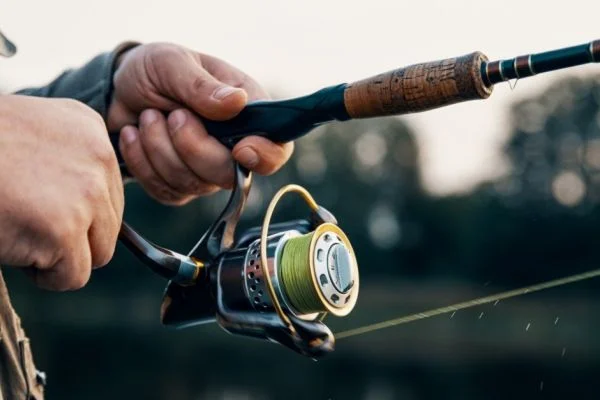Whether you are a beginner or an experienced angler, it is essential to carry a fishing rod properly. This will ensure that you don’t get tangled up in your line and that you can easily access your tackle when needed. Let’s look at the how to carry a fishing rod to maximize your time on the water.
Carry a fishing rod by placing it in a protective rod tube or case. Securely fasten it to a backpack, use a rod holder, or store it in a padded bag to prevent damage during transport.
How To Carry A Fishing Rod | Pro Tips
Carrying Your Rod in Your Hand
The most common way to carry your rod is by holding it in your hand. This method is best for short distances or moving around frequently. Hold the tip section of the rod in one hand while using your other to support the butt section.
When walking with this setup, keep the reel pointed down and away from you so as not to snag yourself with the line or hook any nearby objects.
Also Read: How To Set Up A Pole For Trout Fishing?
Using a Rod Holder
If you plan on standing still for an extended period, then it may be best for you to use a rod holder instead of constantly holding onto your rod. Two primary holders can be used—a fixed holder and a swivel holder.
Fixed holders provide more stability but limit the angle at which you can fish, whereas swivel holders allow for more flexibility but aren’t as stable as fixed holders. If possible, try both types out and decide which works best for you based on where and how you’ll be fishing.
Packing Up Your Gear
If packing up after fishing, make sure to properly secure all of your gear before walking away from your spot. To do this, start by removing all lures or baits from the hooks and placing them inside your tackle box along with any extra line tangled around the reel or elsewhere on the rod itself.
Then wrap up any additional lines around the reel and place any different poles inside their respective compartments before securely closing everything up and heading back home.
Also Read: Can I Take A Fishing Rod On A Plane?
What Should You Not Do With A Fishing Rod?

Fishing is a beautiful pastime that people of all ages can enjoy. Whether you’re an experienced angler or just getting started, it’s essential to understand the dos and don’ts of fishing rod use.
Knowing the right way to handle and maintain your rod will ensure you enjoy a pleasant fishing experience for years. Let’s look at five mistakes to avoid when using your fishing rod.
Overcasting
One of the most common mistakes anglers make is overcasting—i.e., casting too far into the water. Overcasting wastes energy and increases the odds that you’ll miss your target altogether and create a tangled mess with your line.
To avoid this mistake, try to cast just far enough so that your bait reaches its intended destination without expending too much energy in the process.
Not Using Line Saver
A line saver is essential for keeping your line in good condition while fishing. The purpose of the line saver is to reduce drag on the line while rewinding it onto the reel after each cast.
If you don’t use a line saver, you risk damaging or breaking your fishing line with repeated use over time. Investing in a quality line saver will go a long way in ensuring that your fishing rod lasts for many years to come!
Using Too Much Pressure
Another mistake some anglers make when using their rod is applying too much pressure when reeling in their catch or casting out their bait. T
his can cause undue stress on both the rod and reel, leading to breakage or unwanted wear and tear over time. To avoid this mistake, apply gentle but firm pressure when pulling back on your line or casting out into the water—this will ensure that you get maximum power from each cast without putting unnecessary strain on your equipment.
Also Read: How To Use Cable Fishing Tool?
Bottom Line
How to carry a fishing rod? Carrying a fishing rod may seem like an easy task, but many small details need attention to ensure both safety and accessibility when out on the water.
Following these simple tips, anglers of all skill levels can benefit from proper technique when transporting their rods from spot to spot or packing up after an outing has ended!
With these basics under your belt, why not give casting a try next? Who knows—you might catch something unique!

